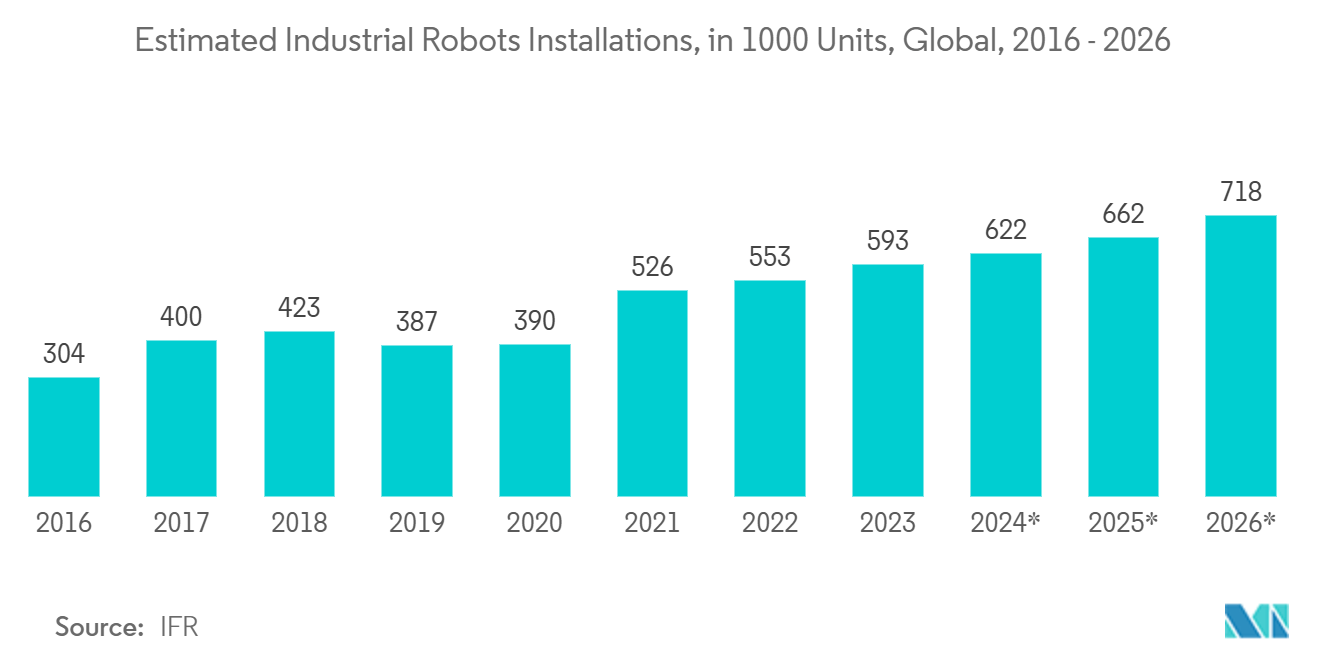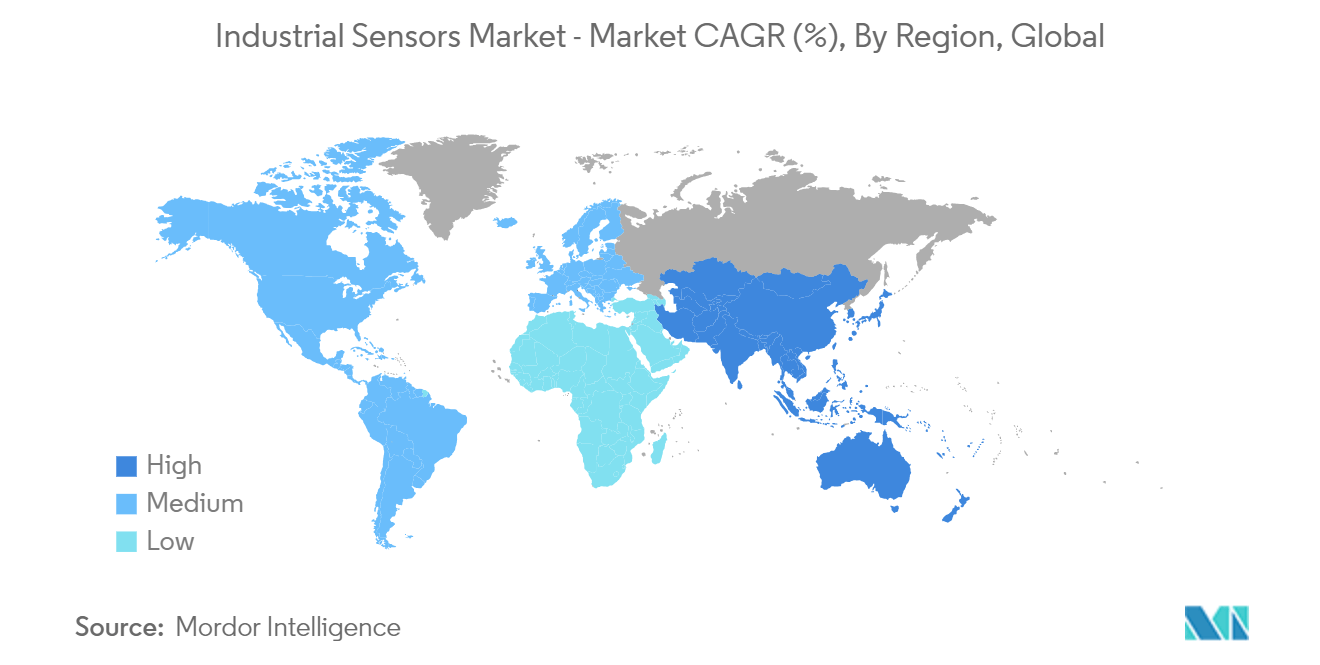Market Trends of Industrial Sensors Industry
Image Sensors Type Segment is Expected to Hold Significant Market Share
- Industrial image sensors play a crucial role in capturing visual data across various industrial environments. These devices are essential for automated inspections, quality control, and monitoring systems. By converting light into electronic signals, they facilitate defect detection, dimension measurement, object identification, and production line monitoring. While primarily used in sectors like manufacturing, automotive, robotics, and electronics, these sensors are fundamental to machine vision systems, allowing automated systems to interpret and respond to visual data.
Rising Adoption of Automation and Machine Vision Systems
- As industries, especially in manufacturing and quality control, increasingly embrace automation, the demand for industrial image sensors is on the rise. These sensors are pivotal to machine vision systems, enabling swift product inspections for defects, ensuring precision on assembly lines, and enhancing overall production efficiency. Furthermore, with the advent of Industry 4.0 and the rise of smart factories, the demand for these sensors in automated environments is set to grow.
- According to the International Federation of Robotics (IFR), global shipments of industrial robots hit around 593,000 units in 2023, showing a significant increase from the previous year. Forecasts suggest these shipments will climb to approximately 718,000 units by 2026.
- Additionally, in May 2023, Cognex unveiled its Advantage 182 vision system, an AI-driven solution designed for OEMs in the life sciences sector, aimed at simplifying complex tasks like location, classification, and inspection. Given the rising demand, many vendors are rolling out new products, underscoring the importance of image sensors in advanced industrial robots and machine vision systems.
- Inspections have gained paramount importance in industrial environments. With image sensors, factory operators can more adeptly spot defects during rapid inspections. For instance, in January 2023, ams OSRAM expanded its Mira family of high-sensitivity, global shutter CMOS image sensors by launching the 2.3mm x 2.8mm, 0.5Mpixel Mira050.
- In April 2024, OMNIVISION unveiled two state-of-the-art CMOS global shutter (GS) image sensors designed for machine vision applications. The company has also set up a specialized machine vision unit to lead innovations in areas like industrial automation, robotics, logistics barcode scanning, and intelligent transportation systems (ITS).
- These newly launched sensors stand out in imaging performance, particularly for applications that require high dynamics, precision, and quick responsiveness. The OG05B1B boasts a 5-megapixel (MP) resolution in a 1/2.53-inch optical format (OF), while the OG01H1B, designed for factory automation and ITS, offers a 1.5MP resolution in a 1/4.51-inch OF. Such strategic initiatives and advancements are anticipated to drive the segment's growth in the foreseeable future.

Asia Pacific Expected to Witness Significant Growth in the Market
- China's swift embrace of robots to supplant human workers is poised to propel market growth. As manufacturing efficiency hinges on automation in China, the demand for sensors ensuring robot functionality is set to surge.
- Japan's pressing workforce shortages are steering manufacturers towards cutting-edge technologies, including automation, robotics, and Industry 4.0 solutions. The Organisation for Economic Co-operation and Development (OECD) highlights Japan's demographic challenges: the nation boasts the world's oldest population and has seen a decline of over 2.7 million in the last decade. Projections indicate a staggering 40% drop in the total workforce by 2065. Consequently, leveraging advanced manufacturing technologies not only boosts productivity and energy efficiency but also curtails product defects. This approach directly addresses workforce shortages, amplifying the demand for industrial sensors in automated factories.
- Japan stands at the forefront of the automated industrial revolution, rapidly embracing Industry 4.0. As a manufacturing nexus for factory automation products, Japan not only caters to its domestic needs but also supplies to other markets across the Asia-Pacific. The nation's significance is further underscored by its diverse industries, including multiple automobile manufacturers, electronics, and food processing.
- South Korea's automotive sector, now a global heavyweight, has evolved from its humble, government-controlled beginnings to a landscape dominated by multinational giants. With industry leaders like Kia Corporation, Hyundai Motor Company, and Renault Group firmly established, South Korea is on a trajectory of sustained automobile demand growth.
- Significant investments across diverse sectors are fueling a burgeoning demand for industrial sensors in India and Southeast Asia.
- As Southeast Asian automotive manufacturers navigate the surging demand for electric vehicles (EVs) with automated driving features, strategic partnerships are becoming pivotal. In January 2024, Exicom, a trailblazer in EV charger manufacturing and a vital ally to global automotive giants, inked a distribution deal with Thailand's energy innovation firm, InnoPower Company Limited. This collaboration is set to reshape Thailand's EV landscape, with InnoPower distributing Exicom's AC/DC chargers. By establishing a local sales and distribution network, Exicom fortifies its foothold in Southeast Asia. Furthermore, as production lines meld human workers with sensors, the appetite for proximity sensors boasting extended sensing ranges is anticipated to rise.


